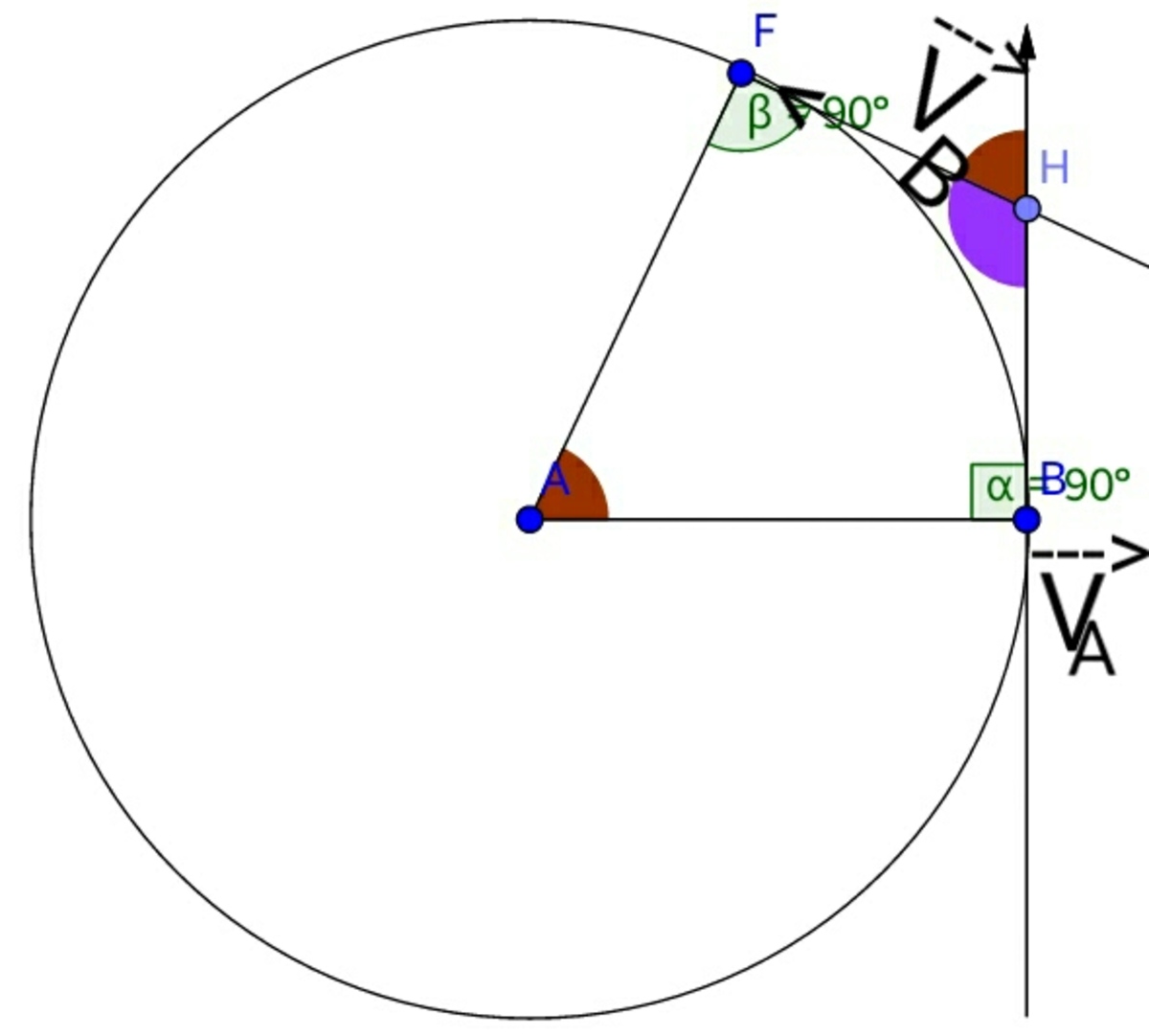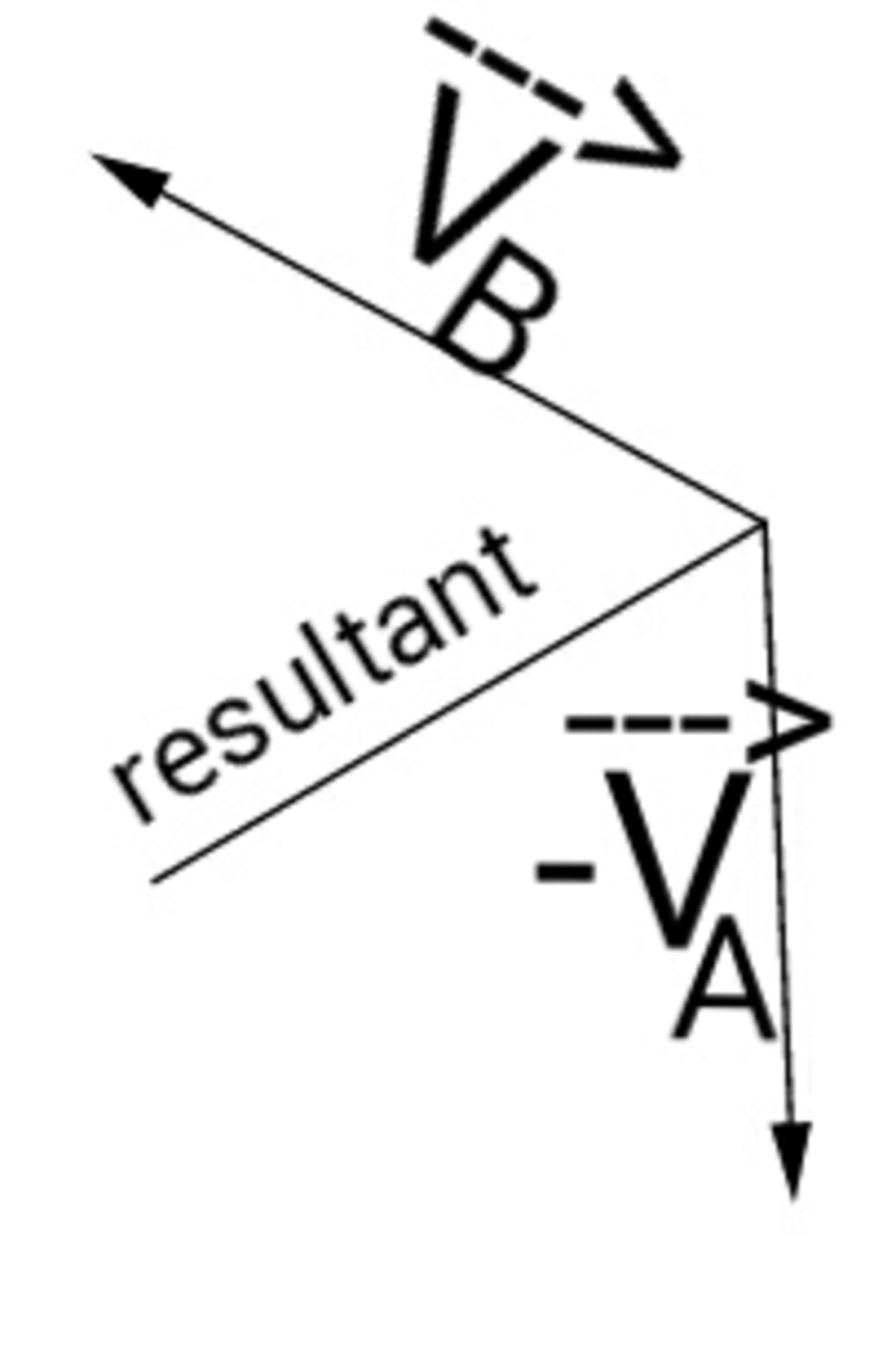Dizzy on a circular path!
A race car is driving on a circular track with speed . Find the magnitude of the change in its velocity (in ) when the car has moved through .
The answer is 259.808.
This section requires Javascript.
You are seeing this because something didn't load right. We suggest you, (a) try
refreshing the page, (b) enabling javascript if it is disabled on your browser and,
finally, (c)
loading the
non-javascript version of this page
. We're sorry about the hassle.
Generalizing:-
 The red angle is theta.
The red angle is theta.
Let the speed be s and angle be θ .
Now velocity has speed and direction, so:-
△ V = V B − V A = V B + ( − V A ) ⟶ 1
Now, the vectors can be redrawn as the following:-

But we dont know the angle between the vectors. So, observe in the first figure that ∠ FHB = 1 8 0 − θ anditis the angle between the vectors we want.
So, taking the value in 1 we get:-
△ V cos 2 θ cos ( 2 2 θ ) cos θ 2 sin 2 ( 2 θ ) Substituting 3 in 2 , we get : − △ V = s 2 + s 2 − 2 × s × s × cos ( θ ) = 2 s 2 ( 1 − cos θ ) ⟶ 2 = 1 − 2 sin 2 θ = 1 − 2 sin 2 ( 2 θ ) = 1 − 2 sin 2 ( 2 θ ) = 1 − cos θ ⟶ 3 = 2 s 2 × 2 sin 2 ( 2 θ ) = 2 s sin ( 2 θ )
So, in this question, we have s = 1 5 0 and θ = 1 2 0
So, △ V = 2 × 1 5 0 × sin ( 2 1 2 0 ) = 3 0 0 × sin 6 0 = 3 0 0 × 2 3 = 1 5 0 3 = 2 5 9 . 8 0 7 ≈ 2 6 0